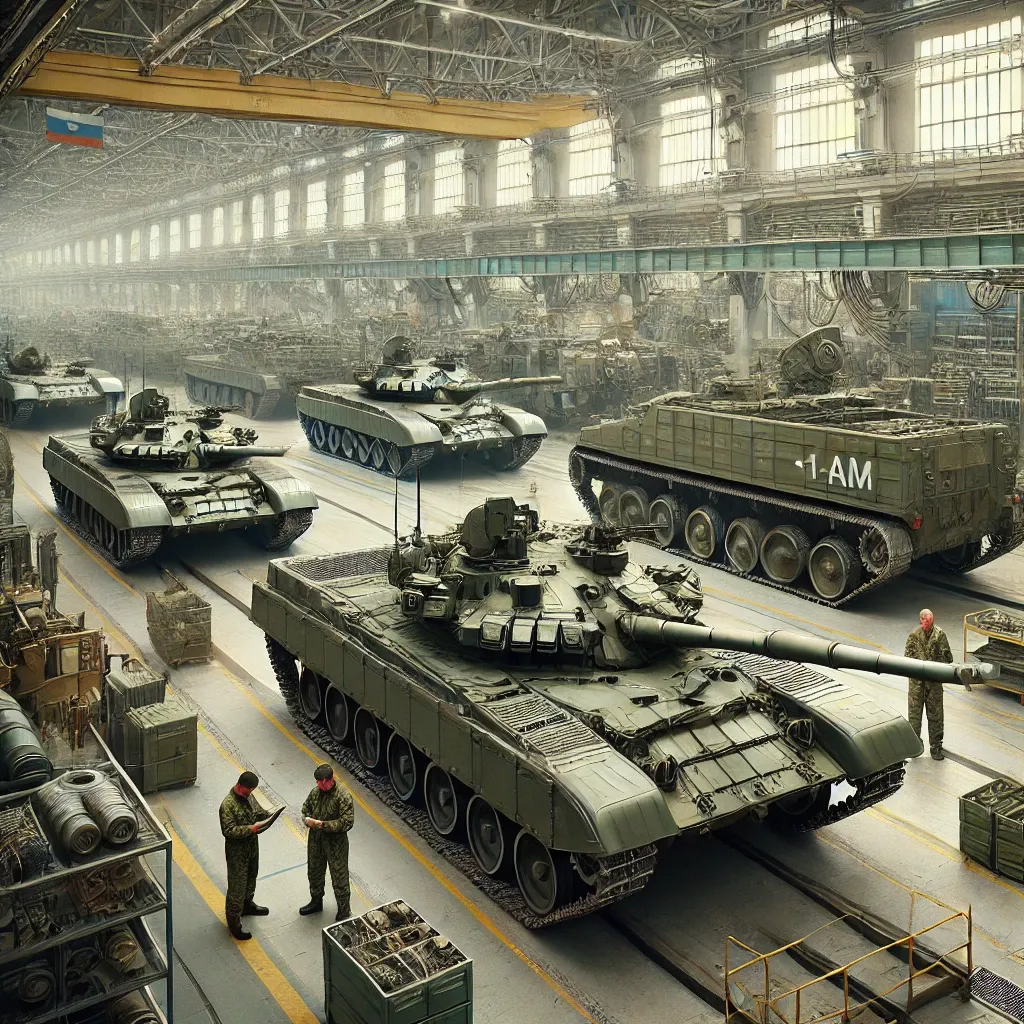Russia’s BMP-1AM and BMP-3 Production Ramps Up Amid Strategic Armored Vehicle Upgrades

TL;DR
Russia is intensifying its production of BMP-1AM and BMP-3 armored vehicles at facilities like Kurganmashzavod and Rubtsovsk to meet growing demands for military equipment. The production strategy includes refurbishing older models and building new units to sustain operational capabilities in conflict zones. With increased workforce and extended production hours, Russia is boosting its defense output, but may rely on allied support, such as from North Korea, to meet future needs.
Russia’s BMP-1AM and BMP-3 Armored Vehicle Upgrades: Production, Redistribution, and Strategic Implications
Russia has undertaken a significant initiative to expand and modernize its infantry fighting vehicle (IFV) fleet, primarily through upgrades to existing BMP-1 and BMP-3 models. This effort is driven by the increasing demand for armored support in conflict zones, as Russia’s stockpiled vehicles are becoming outdated and insufficient in number. Through the combined production efforts of Rubtsovsk Uralvagonzavod and Kurganmashzavod (KMZ), Russia aims to boost its BMP-1AM and BMP-3 fleets with refurbished and new units.
BMP-1AM “Basurmanin” Upgrades at Rubtsovsk
The BMP-1AM, known as the “Basurmanin,” has been part of Russia’s refurbishment program since its introduction. Initially designed in the 1960s, the BMP-1 models have become outdated, but upgrades at the Rubtsovsk Uralvagonzavod plant aim to make them operationally viable. This upgrade involves the installation of a BTR-82A combat compartment, including a 30mm automatic gun, modernized anti-tank systems, and enhanced targeting optics. These modifications significantly improve the BMP-1AM’s combat effectiveness at a fraction of the cost of new production, making it a cost-efficient option for Russia’s Ministry of Defense
The Rubtsovsk plant benefits from nearby rail connections, allowing the transportation of BMP-1 units to the plant and the redistribution of upgraded BMP-1AMs to frontline areas. The choice to focus on BMP-1 upgrades aligns with Russia’s logistical and economic needs, extending the life of stored units and improving Russia’s short-term defense capabilities without new acquisitions.
BMP-3 Production and Limitations at Kurganmashzavod
Production at Kurganmashzavod (KMZ) is primarily focused on the BMP-3, a more advanced IFV with superior armor and firepower compared to the BMP-1. Historically, KMZ produced around 70–100 BMP-3 units annually, but recent demand has pushed production rates significantly higher. By mid-2023, KMZ was operating at three times its pre-2022 production rate, aiming to deliver approximately 210–300 units annually. However, KMZ faces logistical and infrastructural challenges: only 7% of its equipment was modernized as of 2023, necessitating significant investments to sustain such high output
These increased production rates require additional workforce and extended hours. KMZ added over 3,000 new workers, increasing its workforce to approximately 12,000. The factory also extended work hours, ramping up weekly working hours to 816,000—a 2.27 times increase. Despite these improvements, bottlenecks in parts and aging equipment may still limit sustained production at these levels, highlighting the need for further infrastructural investment.
Geopolitical Implications and Future Prospects
As Russia’s BMP stocks continue to deplete, the Ministry of Defense may seek foreign assistance to maintain its vehicle numbers. Allies like North Korea are seen as potential suppliers, with discussions reportedly exploring options to secure additional armored vehicles from abroad to supplement production shortfalls. This strategy underscores the broader geopolitical alliances forming around Russia’s defense needs, as military partners like North Korea could offer logistical support if domestic production remains strained
Strategic Impact of BMP Deployment
With modernized BMP-1AM and BMP-3 units, Russia aims to maintain robust ground support capabilities in ongoing conflicts. However, as refurbished vehicles reach their limits and production cannot keep pace indefinitely, Russia’s reliance on allies for armored support may grow. The current approach highlights both Russia’s industrial resilience and the limitations of relying on older stockpiles. As the defense landscape evolves, Western analysts continue to monitor Russia’s BMP strategy, anticipating further adjustments in production and alliances.
This comprehensive upgrade and production program at KMZ and Rubtsovsk reflect Russia’s dual strategy to modernize and replace its armored vehicle fleet, ensuring operational readiness while managing limited resources and expanding alliances.
Some information drawn from @a_from_s on X: Check their work out here
